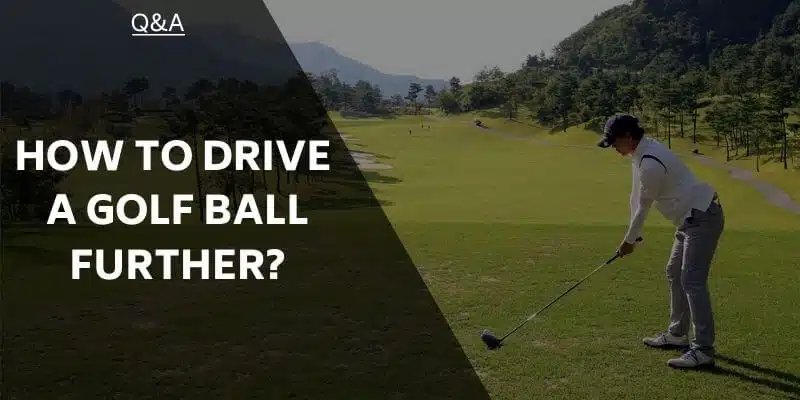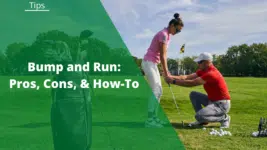Golf is a game for all shapes and sizes, and although some believe tall golfers have an edge, many of the top-performing pros of the modern era are not that tall. Tiger Woods, Brooks Kepka, Rory McIlroy, and Ricky Fowler just to name a few. Patrick Cantlay recently walked away with millions of dollars in prize money having won the FedEx Cup. He stands at 1,78 meters tall!
Using Modern Technology
Modern technology has paved the way for the average golfer to hit the ball far and straight. Being fitted properly for the driver and the irons, will reap fantastic results and make this difficult game, just a little bit easier for us amateurs. Extra stiff shafts for the powerful and fast swing speeds, oversized heads on drivers and irons, and wedges that spin like a top, are all readily available.
The Short Golfer
Manufacturers understand the needs of every category of player out there on the fairways and have the equipment to suit any swing speed, height, and swing type. All the amateur needs to do is take the time and have the patience to test the various offerings and find the best for their game. Because Rory hits a 9-degree driver, doesn’t mean it is good for all golfers.
Below are a Few Tips for Short Golfers:
Tip 1
Stand further from the ball. Shorter golfers should stand a bit further from the ball at set up. It will feel more natural and will become repetitive. Most golfers underestimate the importance of having good alignment and setup at address. Think of it this way. If out on a shooting range, and you fail to aim the rifle at the target, how can you expect to hit it! The same rule applies to golf.
Tip 2
Shorten the Shaft. Standard length shafts will not suit the shorter golfer and the tendency will be to stand too far from the ball to enable the golfer to swing the club effectively and consistently. The toe of the clubhead will stand “proud” at address and will produce hook spin. A flat swing will result and this can lead to a very “armsie” type swing, which will generate no power. Remember a golf swing is all about consistency.
A word of warning to the DIY expert on shortening the shaft. Shortening the shaft will change the characteristic of the shaft and stiffen it. A regular shaft or soft tip shaft will become stiffer and make it more difficult to hit the ball with the same shape and flight trajectory. Take it to a club maker or golf retail store for shortening.
Tip 3
Adjust the Lie Angle. Shortening the shaft will allow the golfer to stand more naturally at address, but the lie angle will need to be adjusted downwards in order for the clubhead to sit flush with the turf. Without this adjustment, consistency will never be achieved. Obtaining the correct lie angle is a simple exercise and requires a hard, flat board or plastic, and some tape. Tape the sole of the clubhead and stand at the normal address position over the board.
Hit a few balls off the board and check where the mark appears on the tape. If at the toe of the sole, the head needs to be bent down towards the heel. Vice versa for the mark at the heel. The ideal position is in the center of the sole. Your local pro shop should be able to do this in quick time.
Tip 4
Widen the Stance. Stability through impact is the objective to produce solid contact with the ball. For the shorter golfer, widening the stance slightly will give a sense of power and confidence to let it “rip” through the ball. Clubhead speed generates more ball speed and distance.
Flight trajectory and ball spin will produce greater airtime for longer tee shots. The standard width at address should be with the feet shoulder-width apart. I suggest the player experiment to find the ideal stance width.
Tip 5
Sway off the ball. Often when the stance is too wide at address, it creates a tendency to sway off the ball on the backswing rather than turn the shoulders and hips. This can cause all kinds of problems and will destroy the power in the shot. Make sure the hips and shoulders turn, as this is the real power source in the swing.
It can be easily checked by standing in front of a mirror or clear glass pane. In fact, this is a great practice drill and can be done anywhere! I do mine in the supermarket, while my wife shops!
Tip 6
Grip. The grip size should be checked to ensure the club sits in the fingers and palm of the left hand. ( for right-hand players! ) Comfort and feel are words used by top golfers worldwide when it comes to fitment. Shorter golfers tend to have less finger length, and a thinner grip is the answer. Grip thickness is paramount as this is the only part where any body part touches the club.
Without comfort in the grip, consistency will never be achieved. Tape wrapped on the shaft under the grip is the method used to increase or decrease grip size. No need to fit new grips and the local pro shop can undertake this inexpensive exercise. Thicker grips are available off the shelf.
Tip 7
Swing Arc. Whilst it is true that taller golfers have a bigger swing arc than their shorter counterparts, it is not the end of the world. Shorter golfers still hit the ball great distances and rhythm and timing can counter this. Swing speed through the ball is the answer, and a balanced shorter golfer can generate the same power.
Tip 8
Swing Sequence. Understanding that the sequence in the golf swing is the key to control and distance, will enhance any golfer’s ability to improve their game. The biggest problem in the swing is generally the rush off the top of the swing, or put another way, the change of direction from backswing to downswing.
The downswing starts from the ground upwards and the lower body and legs are the trigger. Shift the weight from the right side to the left and turn the left hip out of the way. This clears the way for the right side to come through the ball with power. Don’t start the downswing with the turning of the shoulders! This is a swing wrecker!
Advantages of the Shorter Golfer
- The shorter shaft gives more clubhead control and accuracy
- Stability through the swing due to a slightly wider stance
- Clubs can be custom fitted for any height or swing
- Better balance in windy conditions
A Final Tip on Playing in the Wind for Short Golfers.
- Shorter golfers have a better center of gravity and in windy conditions, can be extremely helpful.
- Swing slower in the wind and concentrate on rhythm.
- The harder the swing, the more ball spin is created, and can lead to high flying wayward shots.
- Use an extra club into the wind and play more “bump and run” shots into the green.
- Don’t rush the shot!
Final Thoughts
Being short in stature can be an advantage on the golf course, and is a proven fact on the PGA Tour. The ability to maintain balance through impact is vital and the lower CG on a shorter player enhances this. Generating swing speed is the key to distance and the shorter player can develop this aspect in the same manner as taller players.
Don’t be intimidated!
Related Articles
- The 5 Best Golf Clubs For Short People
- Tips For Tall Golfers; Play Your Advantage!
- Top Rated Golf Clubs For Tall People
- How To Hit A Low Golf Shot
Nick is the founder of GolfSpan and an avid golfer. He's not quite a pro but has over 15 years of experience playing and coaching golfers worldwide. His mission is to bring the golfing community a better experience when it comes to choosing the right golf gear and finding the right setup for your game.






